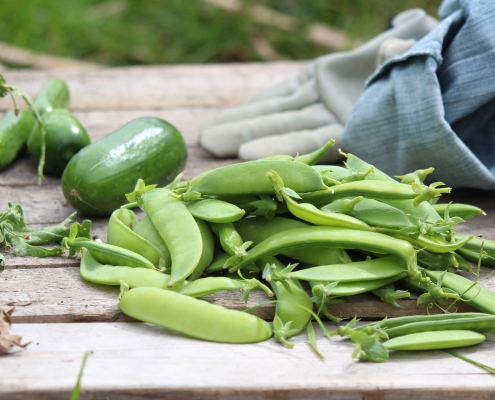Crop rotations with beans and peas offer more sustainable and nutritious food production
FRONTIERS
Growing more legumes, like beans and lentils, is potentially a more sustainable and nutritious approach to European agriculture, shows a new study in Frontiers in Sustainable Food Systems. This study presents some of the first holistic evidence that adding legumes to traditional crop rotations (typically including barley, wheat and rapeseed) offers significant environmental benefits as well as increased nutritional value for humans and livestock.
“This strategy can contribute significantly to the specific European Union Green Deal Farm to Fork objectives to reduce greenhouse gas emissions, chemical pesticide use and synthetic fertilizer use,” says first author Marcela Porto Costa, of Bangor University in the UK. “For example, in Scotland, we’ve shown that the introduction of a legume crop into the typical rotation reduced external nitrogen requirements by almost half whilst maintaining the same output of food measured in terms of potential human nutrition.”
A sustainable source of nitrogen
All crops need the critical nutrient nitrogen in order to grow and, for most crops, farmers must provide nitrogen via fertilizers. However, it has become increasingly clear that conventional fertilizers are not sustainable–they require significant energy to produce, they are depleting finite resources and they pollute the surrounding environments.
The European Union Green Deal Farm to Fork strategy specifically aims to address this problem, with goals to cut greenhouse emissions and chemical pesticide use by 50%, as well as reducing synthetic fertilizer use by 20% by 2030. In contrast to other crop types, legumes are among the only crops that are capable of getting all of the nitrogen they need simply from the air around them. This is thanks to a symbiotic partnership with bacteria that transforms nitrogen in the air into a form that can be used by plants.
Legume crops not only don’t require fertilizer themselves, they also enrich the soil with nitrogen, reducing the need for nitrogen fertilizers for future non-legume crops. From a nutritional perspective, legumes are also one of the most nutrient-rich crops, providing protein, fiber, folate, iron, potassium, magnesium and vitamins.
> Source: EurekAlert!



 Credit: Public Domain
Credit: Public Domain Credit: Public Domain
Credit: Public Domain